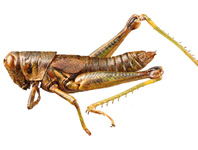Abstract
The name Ameerega picta was once used to denote a lineage of poison frogs (Dendrobatidae) distributed throughout most of the Amazon basin (Silverstone 1976); more recently, to describe a phenetic group involving at least 18 species, Lötters et al. (2007) pointed out that some of the lineages were indeed derived from the former A. picta. Among them, the nominal species with the widest distribution is A. hahneli (Haddad & Martins 1994; Twomey & Brown 2008), also an alleged complex of poorly defined species (Grant et al. 2006; Fouquet et al. 2007; Roberts et al. 2007). The mate-recognition signal, the advertisement call, was part of the evidence used to revalidate A. hahneli as a different species from A. picta. Although the advertisement call has been described for one or few individuals of other species in the group (Haddad & Martins 1994; Costa et al. 2006; Twomey & Brown 2008; Lötters et al. 2009), namely A. flavopicta, A. braccata and A. boehmei, and A. hahneli, we still lack a formal description for A. pulchripecta, the sister taxon of A. hahneli (Twomey & Brown 2008). Its call has been qualitatively described as similar to A. hahneli’s call, but “deeper-voiced” (Lötters et al. 2007).
References
Amézquita, A., Flechas, S.V., Lima, A.P., Gasser, H. & Hödl, W. (2011) Acoustic interference and recognition space within a complex assemblage of dendrobatid frogs. Proceedings of the National Academy of Sciences, 108 (41), 17058–17063.
http://dx.doi.org/10.1073/pnas.1104773108Charif, R.A., Waak, A.M. & Strickman, L.M. (2010) Raven Pro User’s Manual. Cornell Lab of Ornithology, Ithaca, New York, 379 pp.
Costa, R.C., Facure, K.G. & Giaretta, A.A. (2006) Courthsip, vocalization, and tadpole description of Epipedobates flavopictus (Anura: Dendrobatidae) in southern Goiás, Brazil. Biota Neotropica, 6 (1), 1–9.
http://dx.doi.org/10.1590/S1676-06032006000100006Fouquet, A., Gilles, A., Vences, M., Marty, C., Blanc, M. & Gemmell, N.J. (2007) Underestimation of species richness in neotropical frogs revealed by mtDNA analyses. PLoS One, 2 (10), e1109.
http://dx.doi.org/10.1371/journal.pone.0001109Grant, T., Frost, D.R., Caldwell, J.P., Gagliardo, R., Haddad, C.F.B., Kok, P.J.R., Means, D.B., Noonan, B.P., Schargel, W.E. & Wheeler, W.C. (2006) Phylogenetic systematics of dart-poison frogs and their relatives (Amphibia: Athesphatanura: Dendrobatidae). Bulletin of the American Museum of Natural History, 299, 1–262.
http://dx.doi.org/10.1206/0003-0090(2006)299[1:PSODFA]2.0.CO;2Haddad, C. & Martins, M. (1994) Four species of Brazilian poison frogs related to Epipedobates pictus (Dendrobatidae): taxonomy and natural history observations. Herpetologica, 50 (3), 282–295.
Lötters, S., Jungfer, K.H., Henkel, F.W. & Schmidt, W. (2007) Poison frogs: biology, species & captive husbandry. Chimaira, Frankfurt, 668 pp.
Lötters, S., Schmitz, A., Reichle, S., Rödder, D. & Quennet, V. (2009) Another case of cryptic diversity in poison forgs (Dendrobatidae: Ameerega) – description of a new species from Bolivia. Zootaxa, 2028, 20–30.
Roberts, J.L., Brown, J.L., Schulte, R., Arizabal, W. & Summers, K. (2007) Rapid diversification of colouration among populations of a poison frog isolated on sky peninsulas in the central cordilleras of Peru. Journal of Biogeography, 34 (3), 417–426.
http://dx.doi.org/10.1111/j.1365-2699.2006.01621.xSilverstone, P.A. (1976) A revision of the poison-arrow frogs of the genus Phyllobates Bibron in Sagra (Family Dendrobatidae). Science Bulletin Natural History Museum of Los Angeles County, 27, 1–53.
Twomey, E. & Brown, J.L. (2008) A partial revision of the Ameerega hahneli complex (Anura: Dendrobatidae) and a new cryptic species from the East-Andean versant of Central Peru. Zootaxa, 1757, 49–65.

